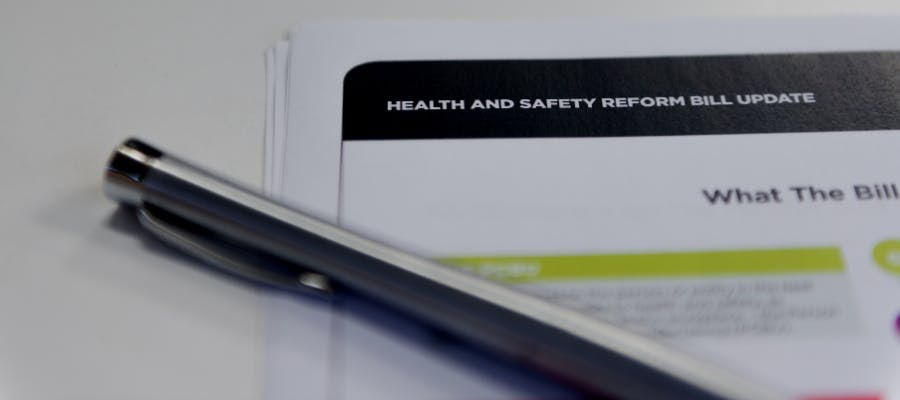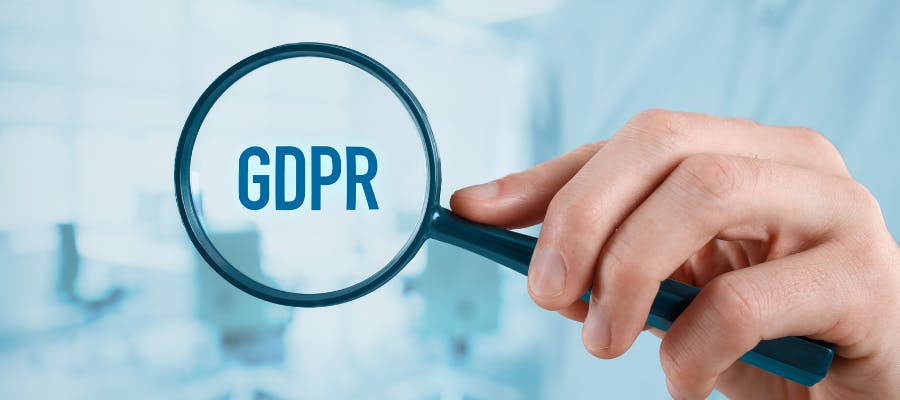First published on Thursday, April 27, 2023
Last updated on Friday, April 28, 2023
Friday the 28th of April is World Day for Safety and Health at Work. Originally, the day was started by the trade union to raise awareness for workplace accidents, illness, and death. Now large bodies like the International Labour Organisation (ILO) recognise the day to stress the importance of prevention when it comes to workplace safety.
And as an employer, prevention is key. It’s your legal duty to make sure you follow the right procedures and complete the appropriate risk assessments to prevent accidents—and keep an accurate record to show it! Because if things go wrong and you don’t do everything you possibly can to prevent an accident, you could be liable, and employees can file claims against you.
So to mark World Safety and Health at Work Day 2023, our BrightSafe health & safety experts have put together a useful blog on the most common health & safety risks and how you can avoid them.
Let’s assess those risks…
Risk 1: Protecting pregnant employees from harm to them or their unborn child
If your employee is pregnant, breastfeeding, or has been pregnant within the last 6 months, you need to take important steps to guarantee their safety. By law, you must evaluate the risks to pregnant employees and carry out an individual risk assessment to cover your worker’s specific needs.
To start, have an open conversation with your employee about any concerns they have about the working conditions. Assess how this will impact their physical wellbeing during pregnancy. But also, the wellbeing and safety of their unborn child.
Your risk assessment should:
- Identify any and all hazards. These could be physical, biological, or even mental and social. For instance, high work demands, long hours—or if working remotely, isolation and loneliness. Pregnant women should not take part in heavy lifting, be sat down for long periods of time, or use a workstation that is bad for their posture.
- Evaluate the risks and take actions to minimise the risk to pregnant workers. For instance, restrict access to hazardous areas at work, assess the ergonomics of their workstation so they’re comfortable, and encourage regular breaks.
- Make sure pregnant staff are not at risk of coming across dangerous substances or working from a height.
- Assess whether they work in a role with a high risk of violence (for example security work, or if they are the only staff member at a petrol station).
Once you’ve taken these steps you must review the risk assessment every trimester, record your findings, and share them with your worker. Then make any necessary adjustments like changes to working environments, shift patterns, or giving them suitable alternative work.
Need more support? Download BrightSafe’s new and expectant mother risk assessment checklist.
Risk 2: Slips trips and falls, protecting staff from minor or serious injury
Slips, trips, and falls all count as workplace accidents. If your employee falls over, slips, or hurts themselves at work it’s vital you record it straight away.
Not only this but under the Safety, Health & Welfare at Work Act 2005, all employers have a duty of care to provide a safe place of work, safe access, and safe work equipment. So, it’s important to assess potential risks (including slips and trips) to prevent workplace accidents.
If you fail to take reasonable care to:
- Provide a safe place to work.
- Provide a safe system of work.
- Provide proper safety equipment (when needed).
- And have trained health & safety representatives.
You could leave yourself open and risk ‘workplace accident’ claims or tribunal hearings.
Even when you take all the necessary precautions your staff can still hurt themselves. Most often accidents are caused by tiredness, employee behaviour, distraction, and office clutter!
To prevent accidents and keep your staff and third-parties safe, you need to identify any potential hazards that could cause a serious fall, trip, or slip. If your staff have a method for recording hazards and identifying risks, it can greatly reduce accidents and give you an accurate record to avoid the risk of any disputes.
Having a health & safety software with a tool for accident reporting means you can keep a log for your protection. But knowing which key details to record can be a challenge. So, here’s a handy hazard-report form to help you get started.
Risk 3: Fire safety—preventing staff endangerment, property damage, or property closure
Did you know the origins of the term “firing” actually came from setting the desks of departing employees on fire? To us, this sounds like a huge health & safety risk but then again it was back in the 1900s…
Hopefully, you’ll never have to witness or experience that kind of fire in your workplace. But if you do, having a working fire alarm is the first point of consideration to alert employees as quickly as possible and save lives.
It’s a legal requirement that all employers in Ireland comply with the Fire Services Act. This means, making sure premises are equipped with the right fire detectors and alarms. And all fire alarms in commercial premises are tested weekly to check they're in working order.
If you fail to do so—and your business is deemed a serious fire risk—you could face prosecution or hefty fines from HSA.
The Fire & Rescue Service will give you relevant warnings and notices, the most serious being a prohibition notice, restricting access to your building. But you can stop it from ever getting to this stage by making sure your business complies with the latest fire safety legislation. Download and keep BrightSafe’s fire alarm test record sheet to help you keep track of your weekly fire alarm tests.
Protect your staff and your business this World Day for Safety and Health at Work
In all these cases and lots more, it is your legal obligation as an employer to do everything in your power to prevent employees from getting hurt at work. Not only to protect your staff from injury but also to avoid penalties, failing inspections and a damaged reputation.
So, stay on top of your responsibilities this World Day for Safety and Health at Work and beyond with templates from BrightSafe’s end-to-end health & safety software, covering over 600 risks. And if you need more in-depth support to prepare ahead of health & safety spot checks, our experts are just a phone call away on 0844 728 0251.
Not a BrightSafe customer? Get better peace of mind when it comes to your workplace safety. Learn more about 24/7 compliant health & safety software and advice.






